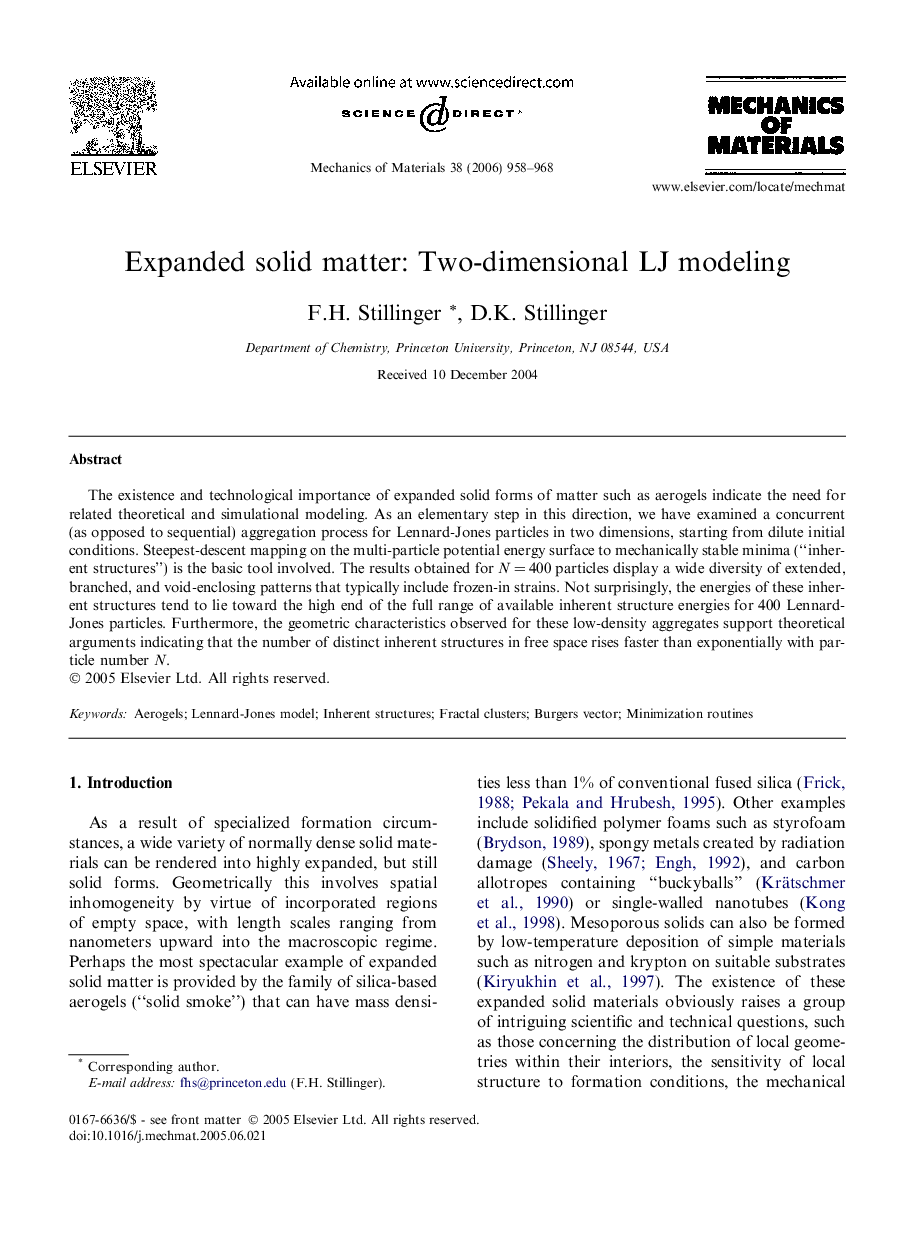| Article ID | Journal | Published Year | Pages | File Type |
|---|---|---|---|---|
| 800461 | Mechanics of Materials | 2006 | 11 Pages |
The existence and technological importance of expanded solid forms of matter such as aerogels indicate the need for related theoretical and simulational modeling. As an elementary step in this direction, we have examined a concurrent (as opposed to sequential) aggregation process for Lennard-Jones particles in two dimensions, starting from dilute initial conditions. Steepest-descent mapping on the multi-particle potential energy surface to mechanically stable minima (“inherent structures”) is the basic tool involved. The results obtained for N = 400 particles display a wide diversity of extended, branched, and void-enclosing patterns that typically include frozen-in strains. Not surprisingly, the energies of these inherent structures tend to lie toward the high end of the full range of available inherent structure energies for 400 Lennard-Jones particles. Furthermore, the geometric characteristics observed for these low-density aggregates support theoretical arguments indicating that the number of distinct inherent structures in free space rises faster than exponentially with particle number N.
